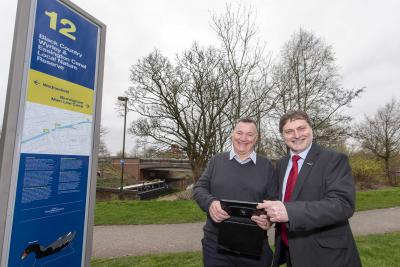The scheme covers 6km of the Wyrley and Essington Canal corridor from Wolverhampton city centre to the Walsall border, and areas of open space alongside it.
The works are part of the European Regional Development Funded project, The Black Country Blue Network.
It has financed improvements at eight sites along the canal that provide habitat for a wide variety of wildlife.
This includes tree thinning, coppicing, strimming back of scrub, removal of invasive species, and the restoration of old agricultural hedgerows that line the towpath boundary.
The scrub, hedge and tree arisings are being chipped and spread over the woodland floor, whilst the logs have been formed into deadwood habitat piles or combined with excavated soil and turf to create hibernacula (shelters for wildlife).
This has gone hand in hand with a major litter picking operation.
The cleared woodland floor and lighter tree canopy will support the successful planting of traditional fruit tree species, a significant number of native bulbs and rhizomes on the woodland floor, as well as patches of wildflower seed and turf.
A series of new way-finding signs that provide information on the canal, its history and wildlife, have also been installed.
City of Wolverhampton Council, Walsall Metropolitan Borough Council, and the Canal & River Trust have committed to jointly manage the LNR for wildlife, education and enjoyment purposes for at least 21 years.
The LNR section in the City of Wolverhampton will also be declared as a Site of Importance for Nature Conservation (SINC) in recognition of the high wildlife value of the site, which is a home for dragonflies, butterflies, water birds, coarse fish and rare aquatic plants.
City of Wolverhampton Council Cabinet Member for City Economy, Councillor John Reynolds, said: “The Blue Network funding is enabling us to maximise the potential of this canal in our city.
“The new Local Nature Reserve provides important wildlife, education and enjoyment opportunities.
“Most importantly, increasing access to this beautiful natural area will ensure it becomes a real asset to our city.”
LNRs are typically owned and managed by the local council. This LNR is unique, as the majority is owned and managed by the Canal & River Trust, with areas of adjoining land owned and managed by City of Wolverhampton Council and Walsall Metropolitan Borough Council.
Further information visit The Black Country Blue Network.
